When the smoke cleared at the end of the First World War, or The Imperial War as it was then known (because it was fought by empires – British, German, and Russian), a shocked Britain was moved to create memorials all over the country. The Imperial War Museum was the grandest of these and was established by an Act of Parliament in 1920. The building in Waterloo was previously the Bedlam Hospital, established by Henry VIII after he dissolved the monasteries in 1533, which accounts for his name above the columned entrance. No tour is complete without him.
Most of the exhibits at the Imperial War Museum London in 1920 were paintings. As time wore on, more space was given to weaponry, vehicles, and other artefacts. When it became apparent that the ‘war to end all wars’ had not done anything of the sort, subsequent conflicts were represented. Since Covid-19 pandemic, much has changed. There is now a Ukraine gallery consisting of photographs, poignant and harrowing, and the Falklands and Iraq War are given due coverage. The War Games display is new and explains the history of gaming but has no interactive element.
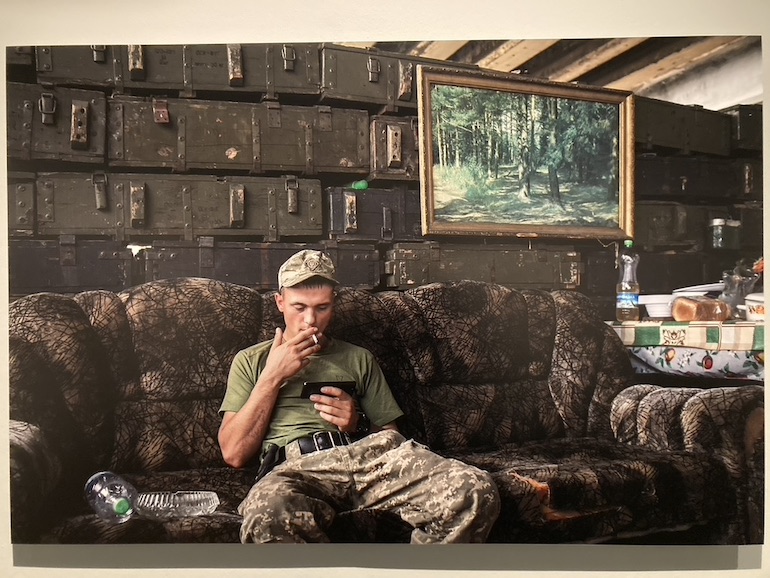 Ukrainian Soldier, Donbas 2018 at Imperial War Museum London. Photo Credit: © Rick Jones.
Ukrainian Soldier, Donbas 2018 at Imperial War Museum London. Photo Credit: © Rick Jones.
Second World War Gallery
Separate exhibitions for World War Two and the Holocaust have been greatly extended. In the former, Field Marshal ‘Monty’ Montgomery is represented by his staff car and his beret. Prime Minister Neville Chamberlain’s well-meant pacificism is stamped on a china plate, and the widespread seasickness of the invading force at D-Day is evoked in the army issue vomit bag. A vial of penicillin and the atom bomb Little Boy shows how the tiniest items affected the outcome of the war.
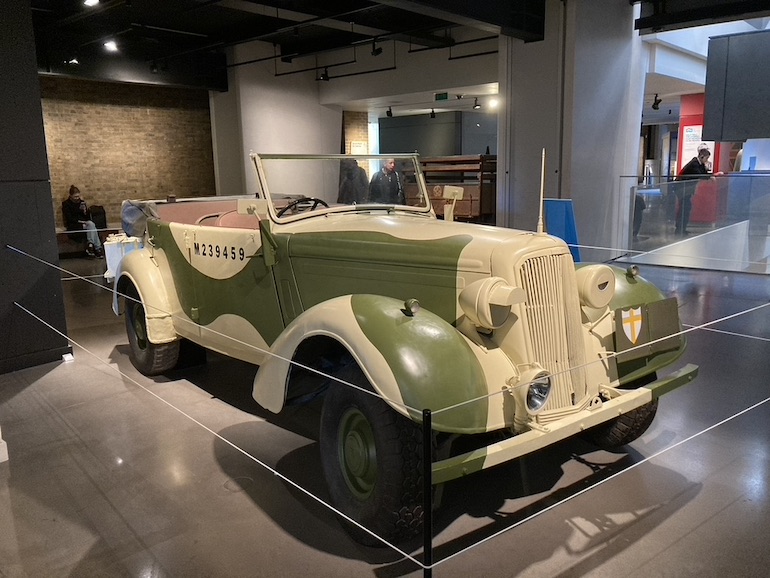 Monty’s Staff Car at Imperial War Museum London. Photo Credit: © Rick Jones.
Monty’s Staff Car at Imperial War Museum London. Photo Credit: © Rick Jones.
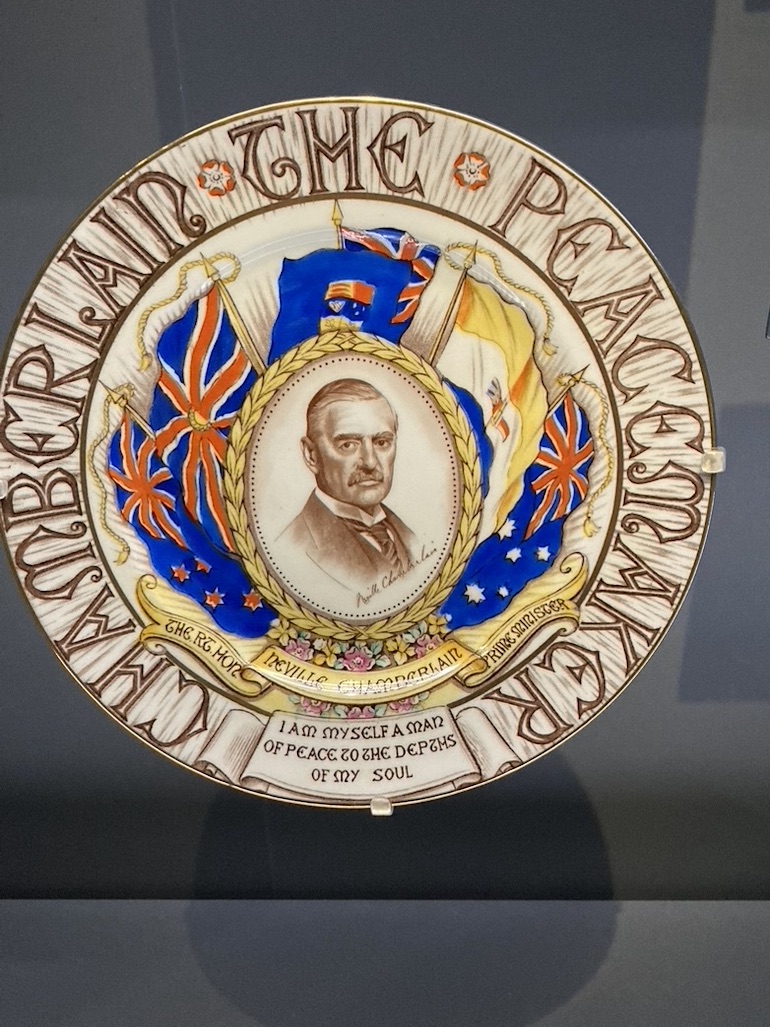 Chamberlain The Peacemaker china dish at Imperial War Museum London. Photo Credit: © Rick Jones.
Chamberlain The Peacemaker china dish at Imperial War Museum London. Photo Credit: © Rick Jones.
The Holocaust Gallery
The Holocaust gallery at the Imperial War Museum London includes many distressing images as well as records of the promotion of eugenics to justify racism and the awarding of motherhood medals to productive Aryan breeders. A millstone bearing a Hebrew epitaph is witness to the desecration of Jewish graves.
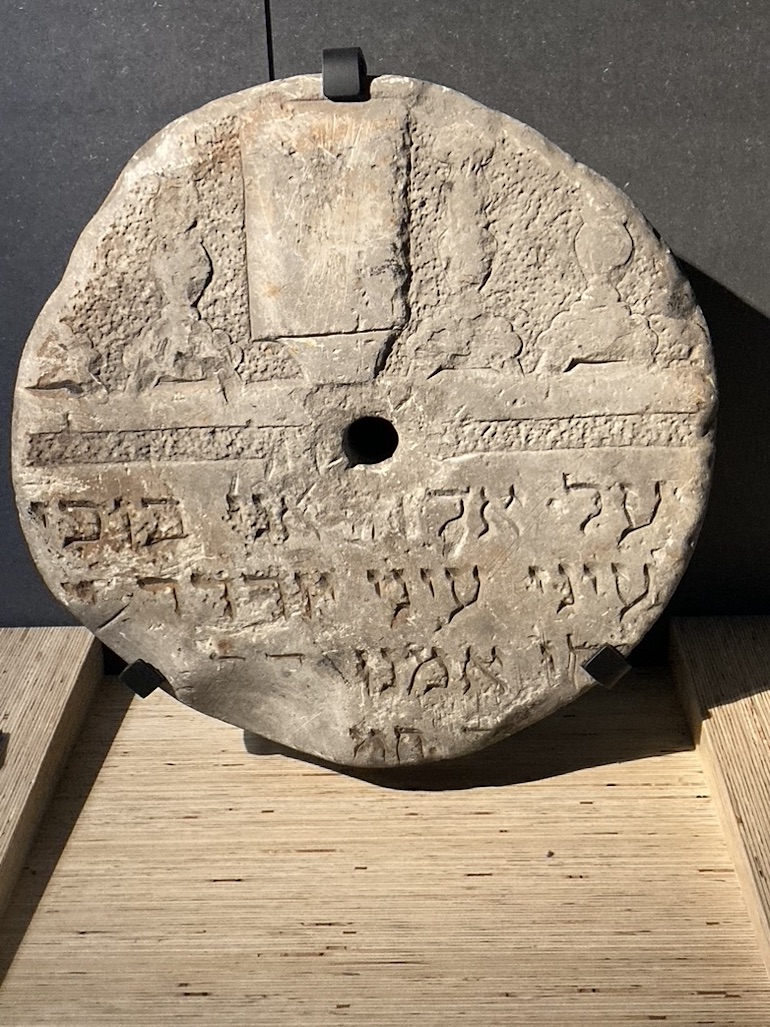 Jewish gravestone re-used as millwheel at Imperial War Museum London. Photo Credit: © Rick Jones.
Jewish gravestone re-used as millwheel at Imperial War Museum London. Photo Credit: © Rick Jones.
First World War Gallery
The First World War Gallery remains largely unchanged, beginning with the Kaiser’s coat with its short left sleeve for his withered arm, continuing to the frighteningly realistic imitation trench with silhouettes of soldiers moving about above ground and the air noisy with sound effects, the metal ‘camouflage tree’ from which some poor sap was expected to spy on the enemy, Lawrence of Arabia’s agal or headrope, to the painting by William Orpen of The Signing of Peace in the Hall of Mirrors, Versailles, 28th June 1919.’ This is from the original 1920 collection, which was removed for safekeeping far from London at the start of the Second World War and has returned only in part. Other paintings are among the most haunting exhibits.
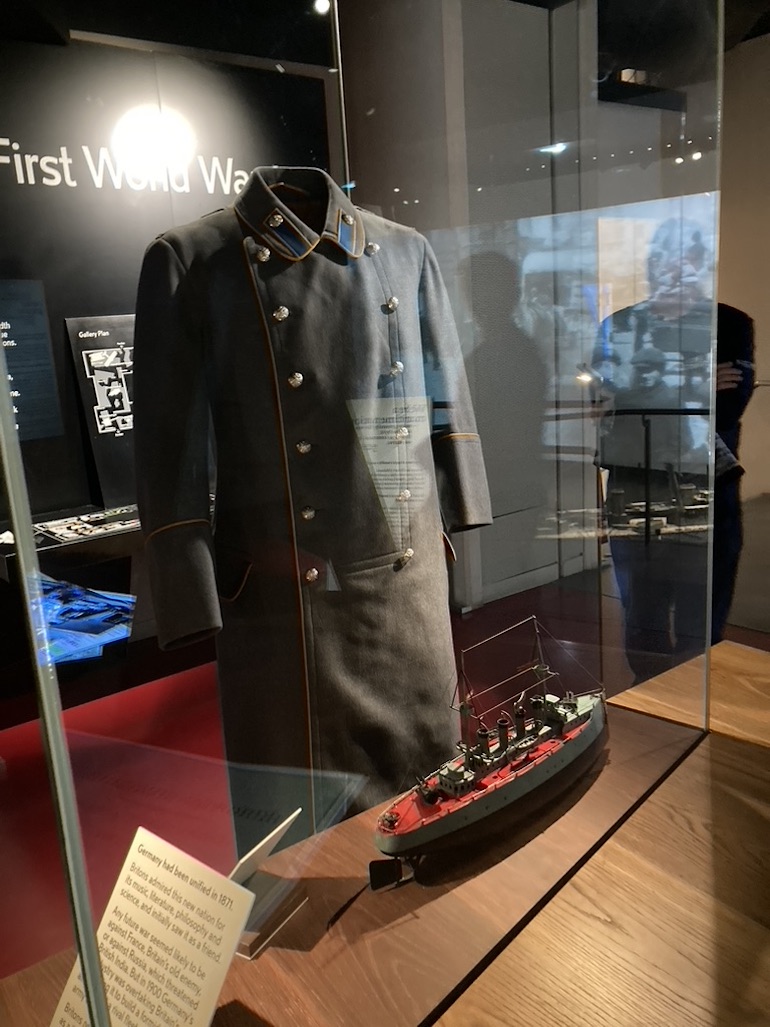 The Kaiser’s coat 1914 at Imperial War Museum London. Photo Credit: © Rick Jones.
The Kaiser’s coat 1914 at Imperial War Museum London. Photo Credit: © Rick Jones.
Second World War artist Laura Knight is strongly represented in portraits and The Nuremberg Trial at which she was present, adding a surreal element of the bombed city as a backdrop. Her colleague Doris Zinkeisen depicted the washing of emaciated prisoners freed from Belsen Concentration Camp in Human Laundry. The artist Stanley Spencer included himself in his long canvas of Clydeside shipbuilding Welders 1941.
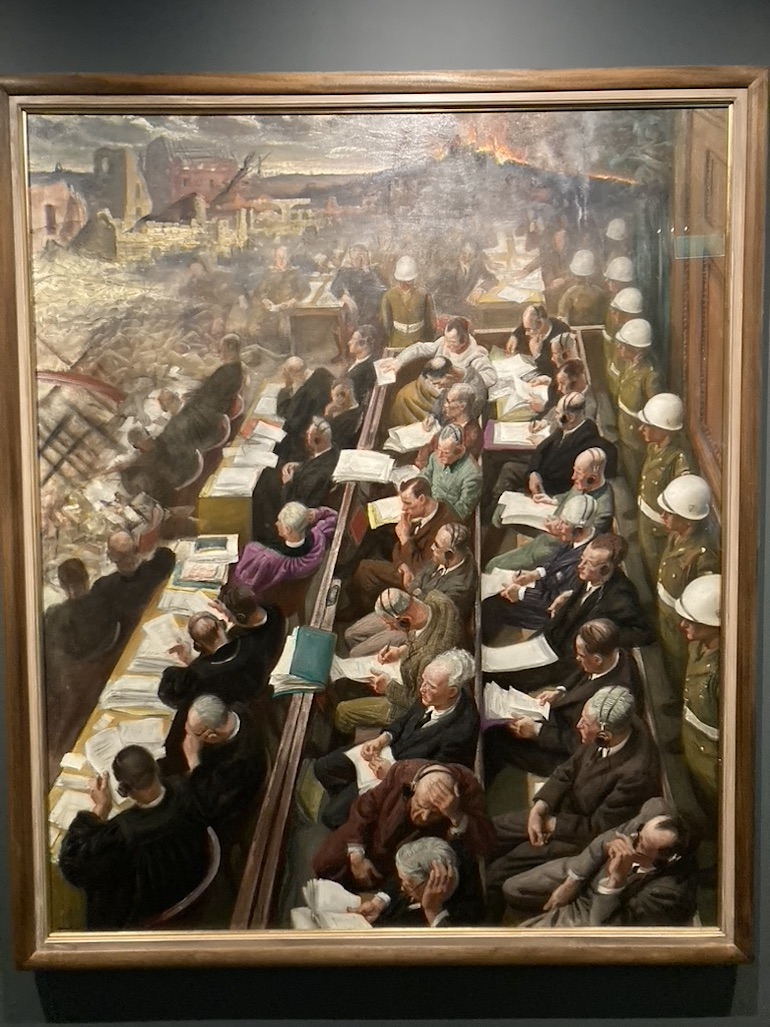 The Nuremberg Trial by war artist Laura Knight at Imperial War Museum London. Photo Credit: © Rick Jones.
The Nuremberg Trial by war artist Laura Knight at Imperial War Museum London. Photo Credit: © Rick Jones.
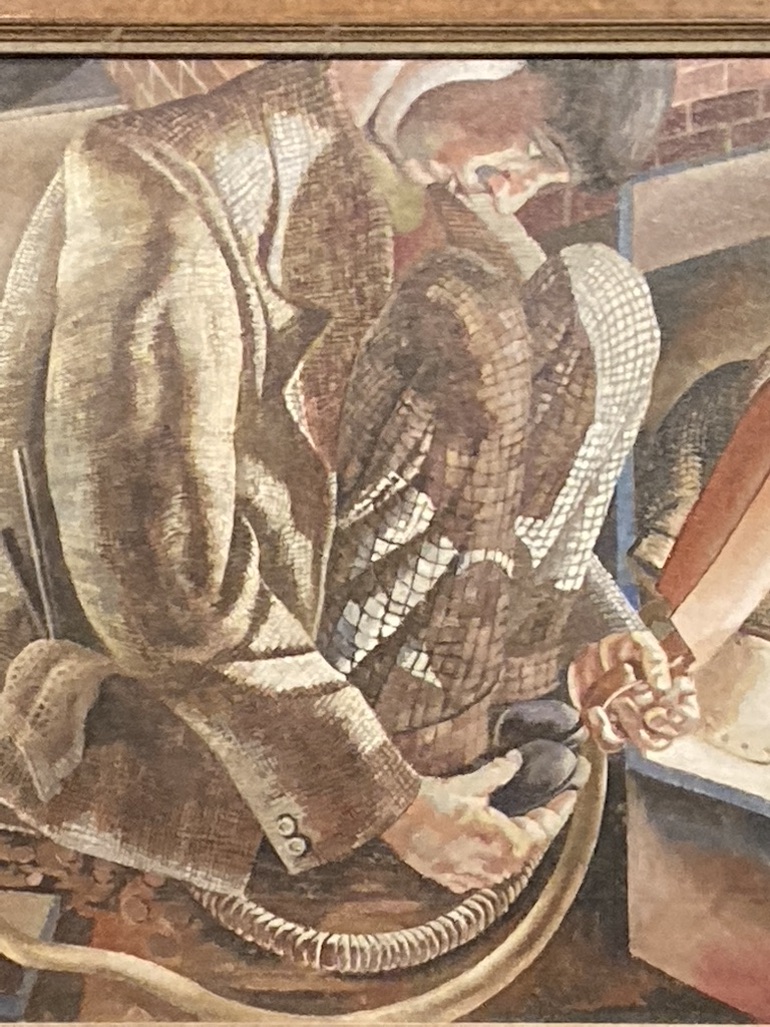 Stanley Spencer Welders 1941 (detail) at Imperial War Museum London. Photo Credit: © Rick Jones.
Stanley Spencer Welders 1941 (detail) at Imperial War Museum London. Photo Credit: © Rick Jones.
One never tells visitors what they are not going to see, of course, but some Blue Badge Tourist Guides may be disappointed to know that a few favourite items have been removed since the last Imperial War Museum blog in 2020. The Margaret Thatcher puppet from the TV satire Spitting Image, the classic leather US pilot’s bomber jacket, and the extraordinary film of the Nuremberg Rally by German filmmaker Leni Riefenstahl have all disappeared. Others – the Enigma machine and the V2 Doodlebug Flying Bomb – remain but in different locations.
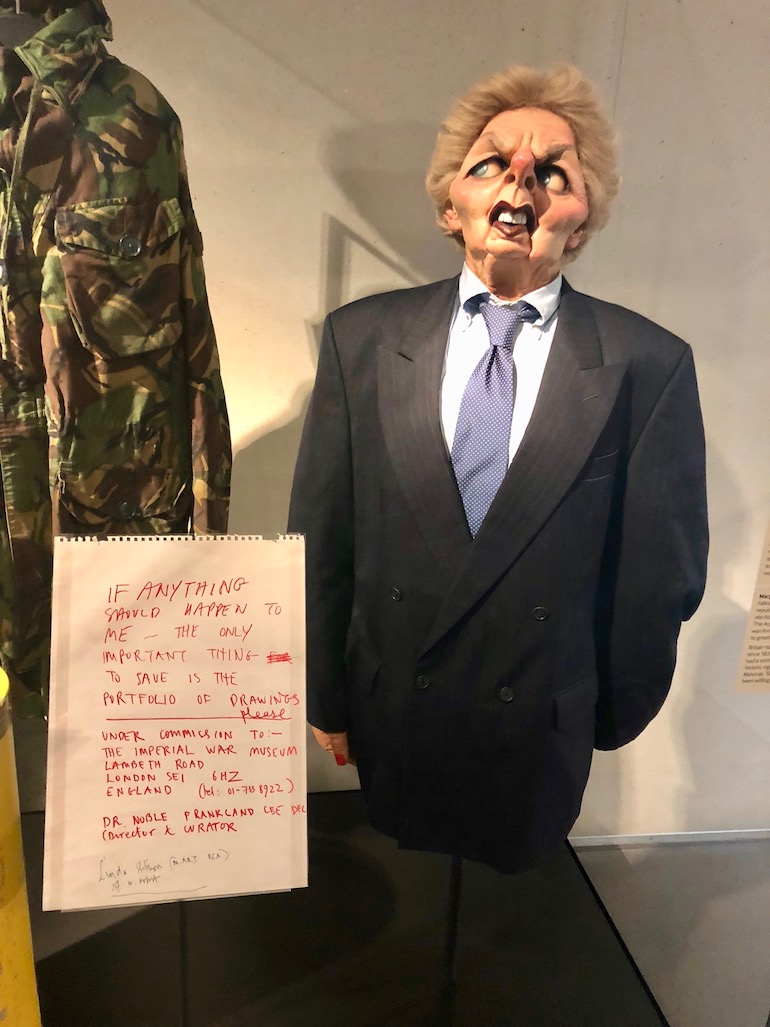 Puppet of Prime Minister Margaret Thatcher at Imperial War Museum London. Photo Credit: © Ursula Petula Barzey.
Puppet of Prime Minister Margaret Thatcher at Imperial War Museum London. Photo Credit: © Ursula Petula Barzey.
Meanwhile, on entering the museum, the atrium is reassuringly familiar with the Hawker Harrier Jump-Jet still suspended as if it had just lifted off and the Spitfire swooping home safely from a dogfight over the South Downs, the V1 Flying Bomb menacingly vertical and, on the ground, the mangled rusty wreck of the Baghdad Car by Turner prize-winning artist Jeremy Deller who took it on tour in America to show the effects of war. Beside it is the Reuters Press Land Rover in which two Palestinian cameramen were injured in 2006. The Nery Field Gun in the centre of the floor saw service in France in 1914 and in London in 1965 to carry the coffin of Winston Churchill to St Paul’s. It is amusing to see that the museum shop now stocks the adventures of Biggles by WE Johns in reprint.
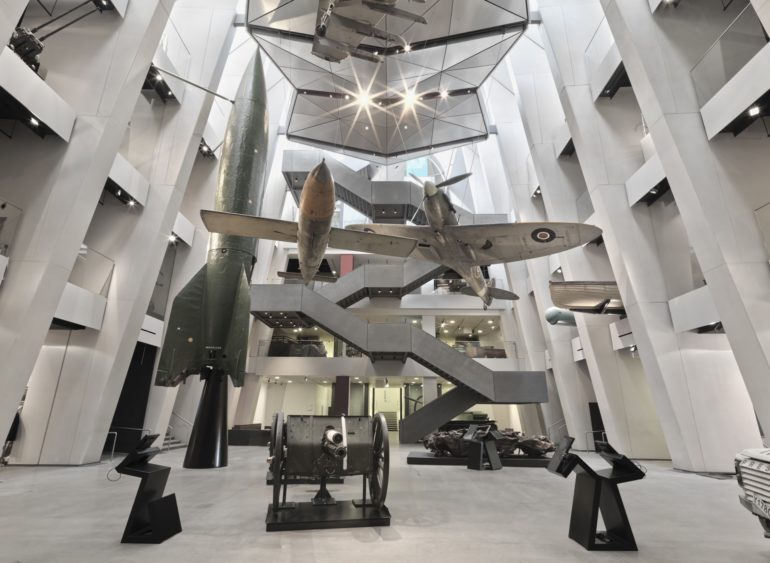 General view of the Atrium at Imperial War Museum London. Photo Credit: © Imperial War Museum.
General view of the Atrium at Imperial War Museum London. Photo Credit: © Imperial War Museum.
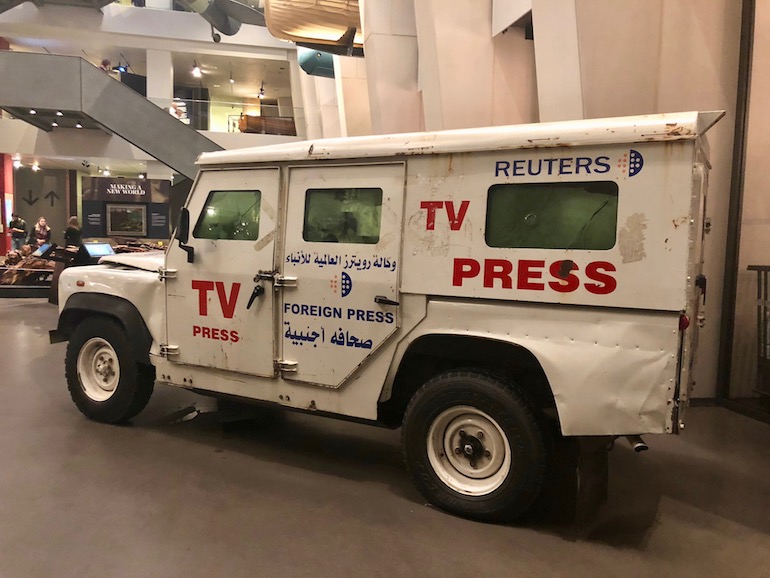 Reuters Armoured Land Rover at Imperial War Museum London. Photo Credit: © Ursula Petula Barzey.
Reuters Armoured Land Rover at Imperial War Museum London. Photo Credit: © Ursula Petula Barzey.



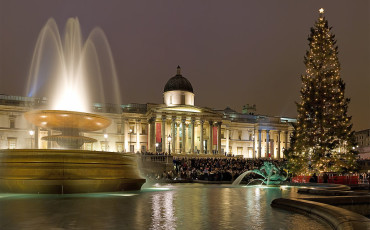
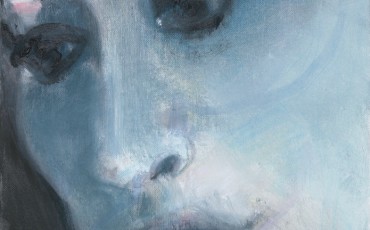


Leave a Reply